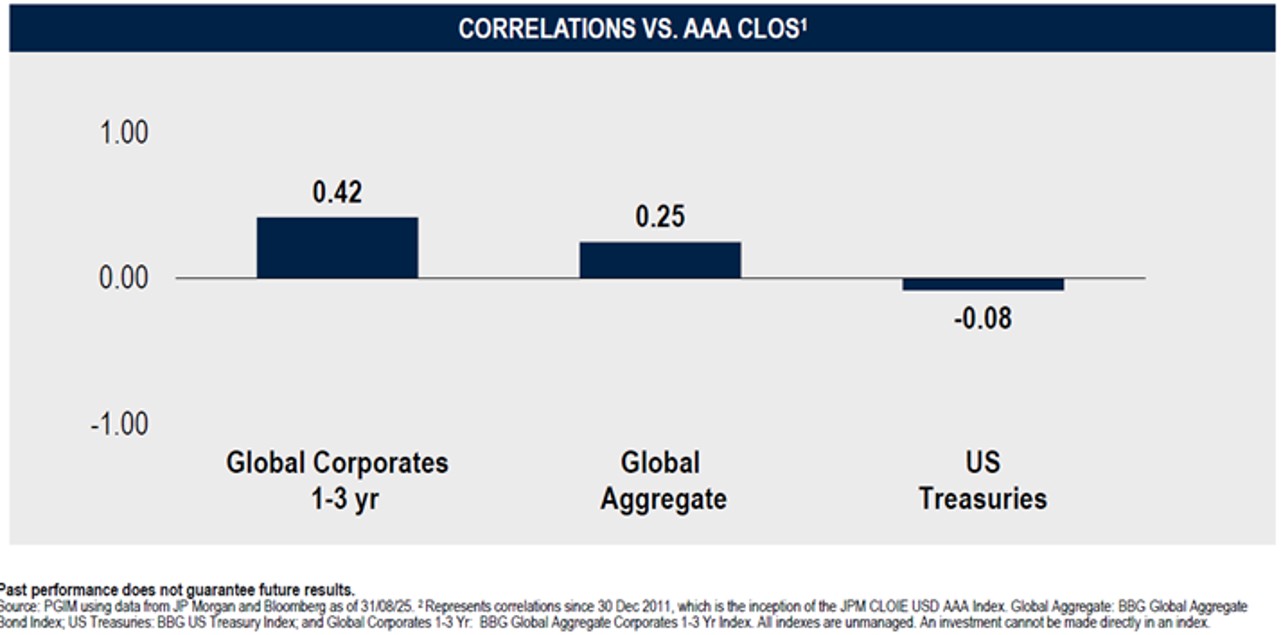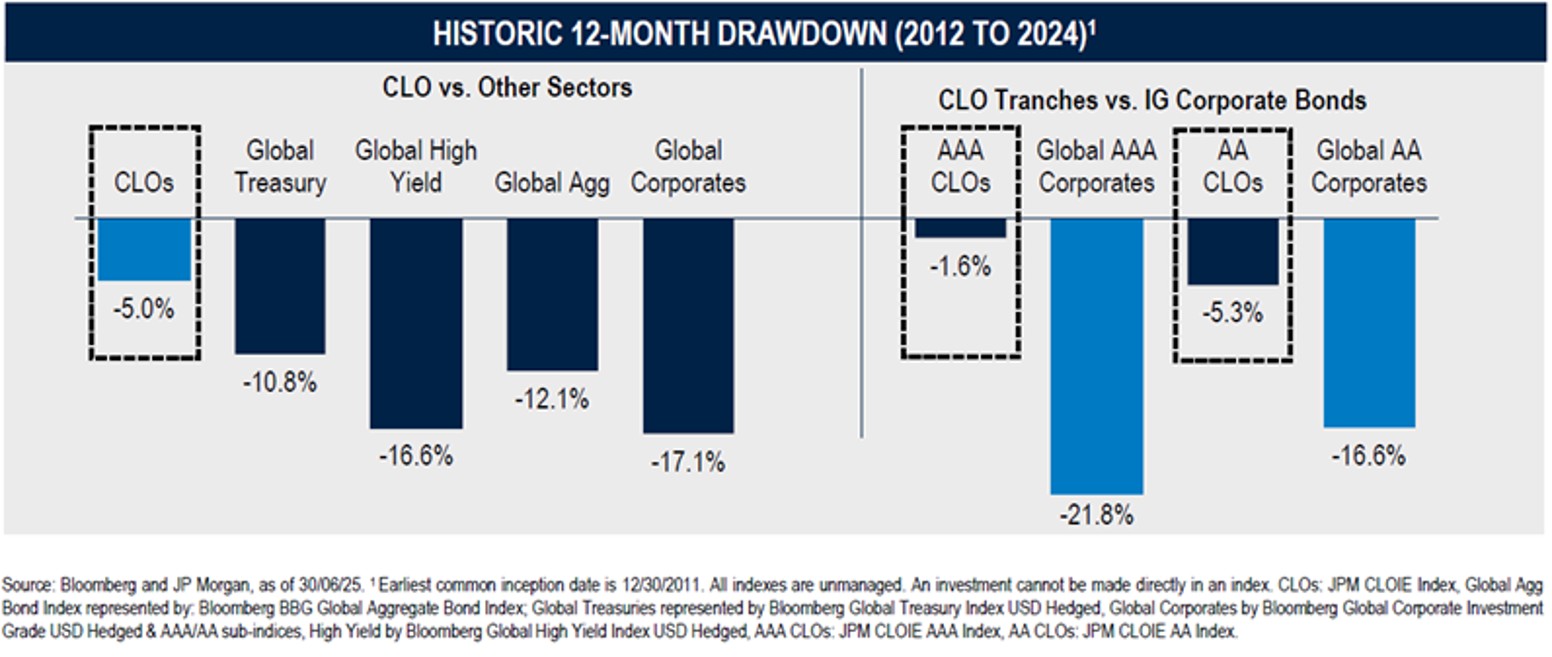Asset Management
Europe's Big CLO Growth Promise, Investment Potential – PGIM

We talk to PGIM, the US-headquartered investment firm, about what it says is the rapid expected growth of collateralised loan obligations. These are securities that are backed by a pool of loans.
This summer, PGIM, part
of US-headquartered Prudential Financial, launched a
collateralised loan obligation (CLO) fund inside a European UCITS
structure. PGIM said the demand for these products is hotting up,
for example among wealth managers.
The full name of the fund is called UCITS PGIM Global AAA
CLO Fund.
European CLO issuance is expected, it says, to double to €75
billion ($86.4 billion) annually by 2030. CLOs are, according to
one internet definition, a "form of securitisation where
payments from multiple middle sized and large business loans are
pooled together.” Such investments offer an opportunity for
investors to gain exposure to higher-than-average returns by
assuming default risk. Each tranche within a CLO has distinct
risk-reward characteristics, with equity tranches offering higher
potential returns at higher risk levels. We have carried
commentaries about the CLO sector before.
At a time when interest rates have fallen and there is a focus on
sources of yield – of a risk-controlled nature – firms such as
PGIM are saying that the asset class deserves attention.
WealthBriefing recently spoke to Edwin Wilches, co-head
of securitised products at PGIM’s fixed income business, about
the sector.
WB: Why in your view are European investors keen
on CLOs and what is driving this?
Wilches: The bond bull market that began in late
2022 is continuing, driven by an environment of elevated yields
and ample carry opportunities. Securitised products, particularly
senior CLO tranches, stand out in today’s fixed income landscape
for their strong relative value and attractive risk-adjusted
returns. With credit spreads for most high-quality fixed income
assets tighter than historical averages, CLO senior tranches
offer compelling opportunities, especially at the top of the
capital structure. Indeed, AAA CLOs continue to offer some of the
widest spreads among investment-grade assets, with far less
duration risk.
WB: I understand that CLO issuance is expected
to double to €75 billion annually by 2030? Who is making this
prediction?
Wilches: Most market watchers agree that CLOs
will continue to serve as a key source of funding for corporate
debt issuance in both the US and European markets, while also
offering an attractive value proposition for debt investors. The
issuance projections vary depending on the source, but €75
billion in euro CLO issuance is definitely within the realm of
possibility by 2030.
WB: In your view, why has this market
boomed in the US in recent years? What sort of investors are keen
on it?
Wilches: In the years following the global
financial crisis, a common misconception among investors was
confusing CLOs with CDOs [collateralised debt obligations), the
highly complex instruments made infamous during the 2008 global
financial crisis. As time has passed and CLOs have demonstrated
their resilience across multiple market cycles, a growing number
of investors have given the asset class a closer look. More
recently, this greater receptivity has coincided with a period of
tightening credit spreads in more traditional investment grade
assets, as well as the rise in rates that served as a return
headwind for fixed rate bonds in 2022.
While investors such as pension funds, insurance companies, and
family offices have historically been active investors in CLOs,
these market developments have led to greater uptake among
investors in the wealth and private banking space.
WB: In terms that a lay investor can understand,
how do CLOs work?
Wilches: Put simply, CLOs are fixed income
securities consisting of aggregated corporate loans. Each CLO
diversifies across 150 to 250 senior secured loans from corporate
borrowers, which are segmented into ‘tranches’ based on
subordination and income priority. Catering to a range of
investor appetites, AAA tranches sit at the top of the capital
structure and are considered the most risk-remote, while
lower-rated tranches offer higher yields but carry greater
risk.
WB: CLOs today are backed by broadly syndicated,
more transparent, senior secured corporate loans. What else can
be said to reassure people who think that complex packages of
loans or bonds make them queasy?
Wilches: A key factor differentiating CLOs from
the pre-GFC CDOs is collateral. CLOs are backed by diversified,
transparent corporate credit, from large, often well-known
companies. This robust collateral base offers greater protection
and comfort versus legacy securitisations such as subprime
mortgages.
WB: Can you give examples of how they are less
correlated to other markets? What sort of data is there on
this?
Wilches: Given their underlying corporate
exposure, CLO tranches tend to be positively correlated with
floating rate or shorter duration corporate of similar quality.
Given the broad, liquid nature of the CLO market, there is ample
data to demonstrate this (see below chart, “Correlations vs AAA
CLOs”). While the correlation between CLO tranches and corporate
debt is positive, it’s not one-to-one – and during certain
periods, such as the UK gilt crisis, CLO tranches have exhibited
lower downside volatility than corporate debt of similar quality
(see “Historic 12-month drawdown” chart below), highlighting the
diversification benefits this asset class can bring.
These benefits are even more pronounced when drawing a comparison
with broader bond indices and developed market government
debt, which have historically demonstrated low or negative
correlation to CLOs.


WB: In holding funds linked to CLOs, what
typically are the fees/expense ratios?
Wilches: Fees and expenses can vary based on a
broad range of factors including CLO tranche focus (e.g. AAA vs
lower rated tranches), flexibility level (e.g. US-only vs full
global approach), distribution channel, vehicle type, etc, so it
really depends.
WB: In terms of time horizons for investors, are
these short/medium/long-term investment
propositions?
Wilches: We see CLOs as offering a compelling
long-term investment proposition. While some investors may take a
more tactical, short-term approach, AAA CLO tranches can serve as
attractive long-term allocations alongside other high quality
fixed income exposures.
WB: Can you give me a general quote on why this
asset class deserves more attention in Europe?
Wilches: The global CLO market is a large,
established segment of the fixed income category. With momentum
building since the late 1990s, these instruments are becoming a
core component of broader fixed-income strategies. New structures
are now democratising access for retail investors following
decades in which CLOs comprised an exclusively institutional
asset class. The US remains the largest market, but Europe is
expanding rapidly.
For investors seeking to enhance yield with minimal credit risk,
AAA CLOs offer a compelling alternative to traditional holdings
such as government bonds and corporate debt. However, rather
than simply replacing core bond allocations, AAA CLOs are gaining
appeal as a complementary holding to improve a portfolio’s
overall efficiency and diversification. For example, allocating
10 to 30 per cent of a traditional bond portfolio to AAA CLOs has
historically improved risk-adjusted returns, especially during
periods of market stress or rate uncertainty.